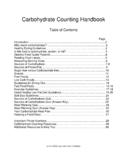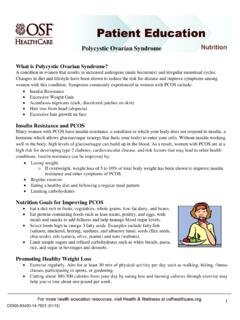Transcription of Diabetic PowerPoint Template
1 Diabetes 101 Michael See, MS, RCEP, CDE Massachusetts Medical Interpreter Conference June 2019 Presentation Outline Diabetes in culturally diverse populations What is Diabetes Epidemiology Classifications Criteria for diagnosis Risk Factors Pathogenesis Approach to patient management Complications Self-management nutrition, physical activity, Treatment and ongoing care Case studies Presentation Objectives At the end of the presentation, attendees should be able to: Discuss the challenges of managing diabetes in culturally diverse populations. Describe the criteria for diagnosis and symptoms of diabetes. Discuss the risk factors and pathophysiology of diabetes.
2 List the target for blood glucose, blood pressure and lipids. Discuss the role of nutrition and the benefits of physical activity in the management of diabetes. List the types of medication for the treatment of diabetes. Describe the complications and long-term risk of diabetes. Discuss the role of diabetes self-management education in assisting PWD to make behavioral changes to manage diabetes. Important Points Diabetes affects racial/ethic minorities disproportionally Care provided to these groups is often suboptimal Diabetes is a complex, chronic illness requiring continuous medical care with multifactorial risk-reduction strategies beyond glycemic control. Care relies heavily on patient participation, and self-management.
3 Patient-centered interactions are difficult when significant socio-cultural-linguistic barriers exist. Skilled interpreters is vital for PWD because essential concepts in diabetes are difficult to translate. Medical Interpreters Perspective What types of patient do you translate for? What type of communication difficulties do you observe? To what do you attribute these difficulties? What things should providers know, understand to communicate effectively? Managing Culturally Diverse PWD Acculturation Biology Depression, emotional distress Education level Fears Group engagement Health literacy Intimacy/Sexual Dysfunction Body image Knowledge of disease Language Medication adherence Nutrition Alternative medicines QOL Religion, faith SES Technology Exercise Social Determinants Provider Perspective Judging unilateral approach to patient-provider communication Cultural competence respecting cultural differences Unconscious bias prejudice, unsupported judgement Interpreters represent an untapped source of insight into common patient-provider communication problems.
4 MI interviewed to understand experiences, perceptions regarding Pt. - Provider communication difficulties. Differences in ideas about illness, it causes, treatment, meaning Expectations of clinical encounter Verbal, non-verbal communication styles can have different meanings Recommendations: Awareness of communication pitfalls Important to show interest in Pt. country to establish rapport Communication would be facilitated using simpler, less technical language Use more conversational style with patients Schedule time with MI to discuss communication issues What is Diabetes? What comes to mind when you think of diabetes? Diabetes Diabetes is a disease that affects how you body handles sugar (glucose) A metabolic disease in which the body s inability to produce any or enough insulin causes elevated levels of glucose in the blood .
5 Diabetes: Myth or Fact Diabetes is a relatively new disease that has come into existence with changing lifestyle habits. Diabetes symptoms go back to 1552 when an Egyptian physician Hesy-Ra, documented Diabetic symptoms such as frequent urination and drastic weight loss for no apparent reason. 11th century water tasters would taste the urine of people thought to have diabetes. Diagnosis given if the urine tasted sweet. History of Diabetes In 1921, Macleod, Charles Best, Frederick Banting, and James Collip succeeded in purifying insulin and successfully treating a diabetes patient with it. History of Diabetes This discovery saved many people from dying in a coma due to high blood glucose levels.
6 Diabetes has been around a long time, but we still need new and better therapies. Prevalence Incidence - rate of newly diagnosed cases of diabetes Prevalence - number of cases alive Marked increase 1990 to 2007 Incidence 2007 per 1000; 2017 per 1000 Driven by decrease in non-Hispanic white, higher educated Racial & Ethnic Disparities Education Global Prevalence Diabetes and Obesity Cost of Diabetes (US): Types of Diabetes Type 2 Diabetes Most common form of diabetes about 90% of cases Previously called adult onset, non insulin dependent diabetes Body produces insulin, but does not use it properly glucose doesn t move into cells, they pile up in the bloodstream sx s when they do occur are often ignored because they may not seem serious What Happens When We Eat?
7 After eating, most food turns into glucose, the body s main source of energy. Normal blood Glucose Control In people without diabetes, glucose stays in a healthy range because Insulin is released at the right time and in right amounts Insulin helps glucose enter cells High blood Glucose (Hyperglycemia) In diabetes, blood glucose builds up for several possible reasons Too little insulin is made Cells can t use insulin well Liver releases too much glucose Development & Progression of T2D Genes, Environment, Socio-Cultural Factors Risk Factors for Diabetes? Diagnostic Criteria Diabetes: Myth and Facts I can t really have diabetes, I have not symptoms! Fact: Many people have no symptoms.
8 You can have diabetes for many years and not have any symptoms, diabetes can cause damage to your body. Symptoms of Hyperglycemia Symptoms Increased thirst (polydipsia) Increased urination (polyuria) Blurry vision Feeling tired Slow health of wounds/cuts More frequent infections Weight loss Diabetes Related Complications Disparities Type 1 Diabetes Also known as juvenile diabetes Usually diagnosed in children and young adults When body s own immune system destroys the insulin producing cells of the pancreas beta cells which produce insulin Only 5% of people have this disease Body does not produce insulin Is not preventable No primary intervention Causes?
9 Predisposition to diabetes genetics - and something ( weather, virus .. etc ) in environment triggers the disease Gestational Diabetes Mellitus (GDM) Having diabetes during pregnancy Family Hx of diabetes, overweight prior to pregnancy, age? Having gestational diabetes puts you at risk for diabetes type 2 Giving birth to a baby >9 lbs also puts you at risk for type 2 18 out of every 100 pregnant females will develop GDM Gestational Diabetes blood Glucose Targets Prevention/Treatment of GDM Preconception planning Gestational diabetes: Physical activity Researchers found being physically active before and after their pregnancy reduced their risk of GDM by about 70% or more Diet A study showed that each 10 gram increase in fiber a day reduced their risk of GDM by 26% Prediabetes When your blood sugar level is higher than normal but not high enough to be diagnosed with type 2 diabetes million with Diabetes 86 million with Diabetes Are You at Risk for Diabetes?
10 Diabetes Prevention Diabetes Prevention Program (DPP) 1-2 year program Education, resources, social support, accountable Goals of DPP 7% weight loss 150 min. physical activity Treatment of Diabetes Early diagnosis, patient education and treatment pays off with longer life, increased productivity, QOF and decreased long-term cost. Know you ABCs A1c Avg. blood sugar the past 2-3 mo. Individualized <7% At least 2x yr. blood Pressure Force of blood inside vessels <130/80 Every medical visit Cholesterol LDL bad <100 mg/dl HDL good >50 women; >40 men Triglycerides <150 3 Individualized Care A1c & Complications Diabetes: A Self-Management Disease Meal plan Activity plan Medications BG monitoring; logging and interpreting results Regular health care appt.






